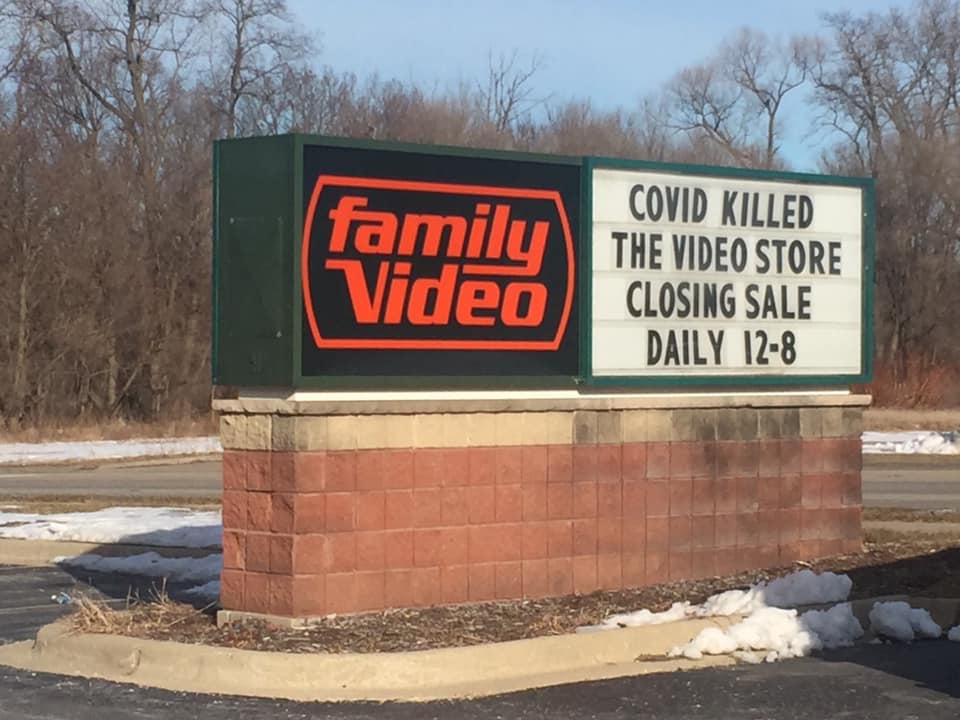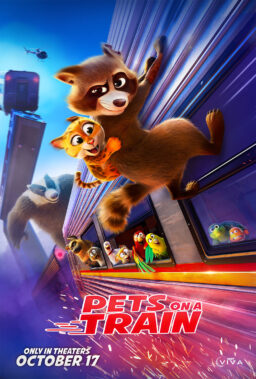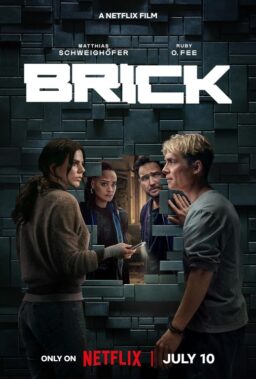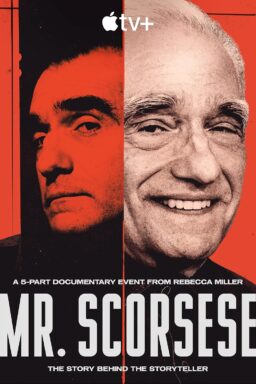It’s time to say goodbye to a beloved institution. By the end of February, all Family Video stores will be closed. The announcement came early last month that they would remain open until February 28th, or when all the stock has been sold off, whichever comes first. Upon hearing this news, for three weekends in January, I trekked out from Chicago to many remote locations to try and score some good deals, but also to savor the video store experience one last time. The final days of Family Video represent not just the closing of a beloved chain, but the very end of a piece of film history.
With the exception of Facets Videotheque in Chicago and the now-famous “Last Blockbuster” in Bend, Oregon, the video store as I know it is gone. I’m sure others are out there just barely hanging on, but I only know about these two. The rare video store has become a kind of specialty boutique. Predictably, COVID all but killed Family Video’s chances of survival. With most movies going to streaming and many not even getting a proper physical release, there’s no way a video business can survive. It’s rather remarkable they lasted as long as they did, with hundreds of stores located across 17 states.
I drove around rural Illinois, Indiana, and Wisconsin in hopes of bringing home movies for my collection, but I found myself also wanting to take home some video store memorabilia. I looked around and noticed they were selling off some of their signs. “Rent 3, Get 1 Free”; “Holiday Favorites! $1 each for 2 nites”; “Free Kids Movies!” Someday, these signs will have to be explained to people: “Movies were once physical items. They had to be retrieved at video rental stores and played on a machine separate from the TV.” I bought eight of these signs, as well as a #savethevideostore t-shirt. I’ve been told the “Adult Films – Must Be 18 To Enter” star signs were a hot commodity, as were the large gumball machines, the M&M stands and the director’s chairs. I would have loved a director’s chair.
Why are we buying this stuff? What possible purpose could it serve? For me, it’s part of the journey of a film lover and film collector.
I’ve been a collector since 1984 when my dad finally got the family a VCR and, because of his job as a video producer, gave me stacks of used VHS tapes that I then filled with my favorite movies, mostly taped off HBO. I can remember all the names of the video stores we went to in the Arlington Heights area over the years: Shelkop TV and Video, Front Row Video, Quick-Flix Video, The Video King, Dominick’s (yes, the grocery store), Blockbuster (of course) and the greatest laserdisc rental store of all, Entertainment Tonight Video in Mt. Prospect, IL., where I would eventually work in the mid-to-late ‘90s.
And Family Video on Rand Rd. and on Wheeling Rd. in Prospect Heights.
They’re all gone now, but I have hung onto so many items from those places, including an expansive movie poster collection, which my friends Jim and Justin helped me curate. We would regularly raid the dumpsters of these stores and take home rolls of movie posters and standees. We would also ask store owners if they had anything they wanted to give us and many were eager to give us their trash (treasures).

Much of this trash provided a window into the business of a video store during that time. I found all sorts of advertisements to retailers offering deals on titles: “Buy four copies of ‘Brazil,’ get a fifth free!” From many years as a customer and employee, I learned that video store owners were an eccentric bunch (that’s putting it politely in some cases). What exactly lured them to the business model of having to purchase one copy of “Shy People” for around $70 and then hoping it would rent at least 20 times for it to make its money back? It was a prohibitively expensive business before DVD came around. Little wonder that so many video stores in the ‘80s and ‘90s came and went. In the documentary “The Last Blockbuster” (which I recommend), I was stunned to see the owner of that store buying movies at a Target instead of from a distributor at a discount. Then again, do we have those distributors anymore? Why would we?
As a teenager, my small bedroom looked like a shabby video store, with posters everywhere, issues of Video Review laying around, movie standees and an overflow of Kodak VHS tapes. Over the decades, it morphed into a laserdisc collection, then DVD and now Blu-ray/4K. But I still managed to hang onto trinkets from the past, including a Blockbuster Video name tag, assorted buttons and a VHS copy of “9 to 5” from Quick-Flix Video, my personal favorite store from the mid-to-late ‘80s, my formative years as a burgeoning film student.
And now I have signage from Family Video. Driving hours out of the way to look around at fading video stores sounds like madness to some people, but I have to think some of you reading this get it. Sure, I got some movies, too, but I think having a physical piece of the video store itself has an extra special meaning to it. It’s like owning a 16mm projector or an old BETA player. It has no practical use in 2021. Just personal value.
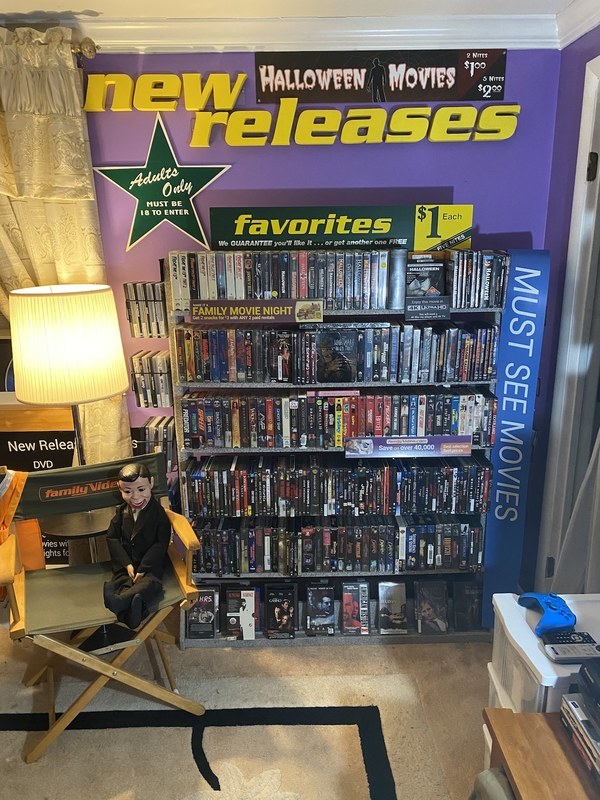
When Video Archives in Hermosa Beach, California closed, Quentin Tarantino (a former employee) bought their whole inventory and recreated the store in his basement. He spoke of that place being a lifesaver to him and I imagine videos stores had that effect on many people. They were a film school, a social gathering, a place of cinematic discovery, date nights, and rites of passage. For a film lover today, the fact that there will be no more stores of any kind for other film lovers to congregate is just sad. Yes, I have made many discoveries by browsing through selections on the best streaming services. I’ve also gotten headaches.
I’m seeing people on Family Video’s Facebook and Instagram pages taking pictures of their collections and how they have new life to them, thanks to a “New Releases” sign they just bought. Recreating the video store in the home could become a small fad among cinephiles, much like Tarantino’s basement video store idea. What other use could they possibly have?
“Family Video means happiness to me,” said Danny Knight, whose photo is shown above. “Ever since I was a little kid I loved going to movie stores. The reason I bought the Family Video stuff is so I can have a reminder of a better, easier time that meant so much to me, a time where anything was almost possible. This end of an era is very disappointing and sad.”
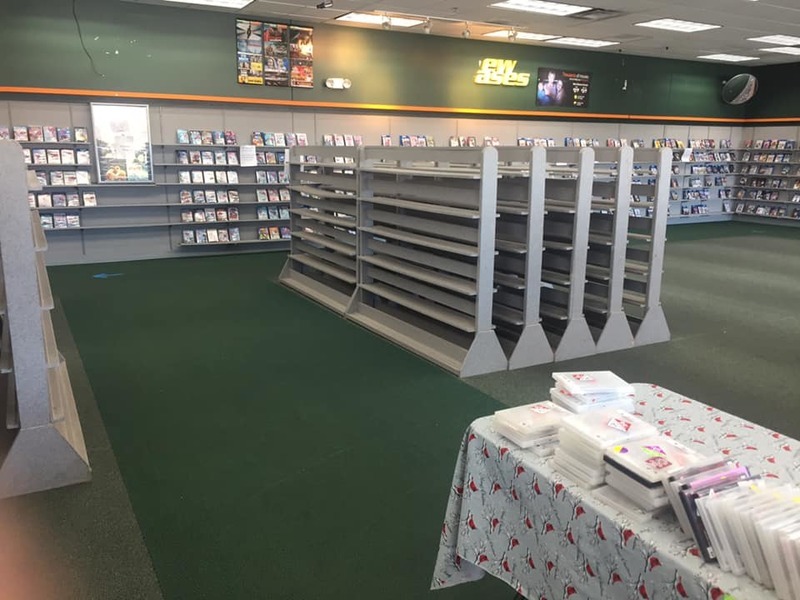
The signs I bought will not rot away in an attic or basement. Someday, when my girlfriend and I have a bigger place, I want to replicate the video store look with my collection. I have been thinking about it a lot over the past month. I know what the shelving will look like. I know where the signs will go. I know where to put those big “12 Monkeys” and “E.T.” standees that have been in storage for the past couple decades. I know how my movies will be categorized. Most importantly, I want many of my titles facing out, not lined up all squished together, like they are right now, bursting at the seams. I want to see the actors’ faces. I want our friends and family to come over and browse and discover, like we all once did.
In those weekends in January, I never once walked out of a Family Video disappointed that they didn’t have anything I wanted. I walked out grateful for the experience of being in a video store one last time, browsing a collection and seeing others holding stacks of movies or video games they planned to bring home. Needless to say, it’s been a bittersweet journey. Hearing families tell the clerks, “We’ll miss you” as they add piles of candy and popcorn to their purchases; seeing rows of sad, empty shelving units all pushed into a corner with “FREE! TAKE ONE!” signs on them; hearing customers ask “Is Marco’s Pizza (Family Video’s sister business, often located next door) closing as well?” and clerks answering “No, they’ll still be here.”
One thing I loved seeing at some of these locations was the attached pizza place, a door where you can pick up your Marco’s pizza in the same place you get your movie rental. For many in these rural areas, that was a common weekly ritual. There are many who still don’t want to adopt a collection of streaming services for their movies. They want things to remain simple, old-fashioned, and pure.
I once drove back home thinking about the pizza-and-a-movie combo and just how “right” it all is. It reminds me of when Quick-Flix Video partnered up with Goo-Cheese Pizza, located in the same strip mall, and offered customers a movie rental with their pizza delivery. My first job was at Goo-Cheese. I was 15. I couldn’t work at Quick-Flix because of the adult films, but I would go there after a shift and just talk to the clerks behind the counter about movies. And then I’d browse for a while and maybe watch whatever movie happened to be playing on their jumbo screen. They had actual theater seats for customers to sit in, something I had never seen before or since. Hours could’ve gone by. Finally, I’d bring up a VHS tape housed in a clunky cover box, maybe add a bag of Twizzlers, and rummage through their movie posters. I almost always came home with a movie and a poster.
I’ll never forget that place. If Family Video was your Quick-Flix, I hope you got to take home a little piece of it. Don’t ever throw it away.
Be sure to also read Matt Fagerholm’s “Family Video Celebrates Forty Years of Movie Rentals” and The Editors’ “We Lost It At Our Video Stores: The Writers Remember Video Rental Havens.”

